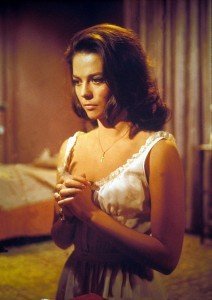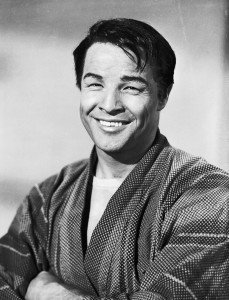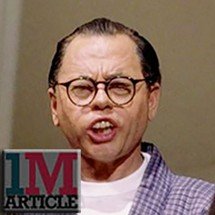A Clear Case of Whitewashing
It’s called whitewashing. It occurs when a white actor is cast in a non-white role. The practice has been around since the dawn of the film industry. You might remember seeing or hearing about some of the more historical accounts of white actors portraying minorities in blackface or exaggerating their features for Asian roles. Al Jolson did it in The Jazz Singer (1927), and the Chinese detective Charlie Chan in the 1930s films, has never been portrayed by an actual Asian actor. By the 1950s and 1960s, films became more integrated with black and Asian roles being cast appropriately. However, the practice of whitewashing still applied as other minorities were still underrepresented. For example, Rooney Mara being cast as Tiger Lily, a Native American character, in Pan (2015), or the starring cast of Gods of Egypt (2016) lacking any Egyptian or Middle Eastern actors at all. However, these are just instances of non-white characters being adapted into white characters by the nature of who is portraying them. What follows are ten outrageous miscasts where white actors filled minority roles and attempted to portray them as minorities. Some you might not be aware of and others you might have forgotten, but they all really happened! You’ll notice they get worse and more outlandish the closer you get to number one.

#10 Natalie Wood in West Side Story (1961)
This modern-day Romeo and Juliet musical takes place in New York City’s upper west side in 1957. The Jets, a white gang, battle for turf against their rival, the Sharks, a Puerto Rican gang. Things really heat up when a member of the Jets falls in love with the rival gang leader’s younger sister, Maria (Natalie Wood). It’s a great story and a great film. What many don’t seem to realize is that Natalie Wood, portraying Maria, was full-blooded Ukrainian-Russian. The makeup department applied the skin-darkening toner pretty liberally to make her complexion a little darker. Ultimately, you forgive the filmmakers for this misstep as Wood gives a phenomenal performance. We can just chalk her appearance up to an overzealous makeup artist, right?

#9 Joel Grey in Remo Williams: The Adventure Begins (1985)
Growing up, I loved this movie. Rugged Fred Ward, pre-Janeway Kate Mulgrew, and serene Zen-master Joel Grey. The film earned mixed reviews, nowadays residing in the realm of cult films, yet Joel Grey did earn a Golden Globe nomination for his performance as the Korean martial arts master tasked with training our hero. It wasn’t until later, when I saw his Academy Award-winning role in Cabaret (1972) that I realized that Grey wasn’t Korean! What? Nope, maybe everyone else knew, but I had no idea they used that much makeup on him to change his appearance. Grey did a spot-on job as the character and truly deserved his award nomination. However, they couldn’t find a Korean actor, or even an Asian one, to portray the character? I can’t fault this film too much. Grey is a great actor and has a pivotal role. Maybe they screened Asian actors but were unable to find anyone they liked. I don’t know. Many viewers might not have even included this film on this list, but hey, it was my childhood that was upended so it’s on this list simply so that I can have some closure. You wouldn’t begrudge me that, would you?

#8 Charlton Heston in The Ten Commandments (1956)
If you haven’t seen it, it is a pretty epic Biblical film starring Charlton Heston and Yul Brynner as Moses and Ramesses II, respectively. Yul Brynner has an exotic look but Heston, the great actor he was, is nowhere near resemblance enough to portray a Middle Eastern character. In the end, the film stood on its merits and Heston’s protrayal was applauded. Most seemed to look past the stacked cast full of white actors in a film about characters of Middle Eastern descent.

#7 Charlton Heston in Touch of Evil (1958)
What? Heston, again? Yep, repeat offender Charlton Heston appeared to be the go-to guy for portraying minority characters in the late 1950s. In Touch of Evil, Heston stars as Miguel “Mike” Vargas, a Mexican narcotics official out to get a corrupt American police captain (Orson Welles). In my opinion, it’s one of the greatest film noir crime thrillers ever made. Although watching it, it is just plain silly to me to see Heston trying to pull off portraying a Mexican agent. I guess we can blame Welles for this one as it was his last-minute script changes that made Heston’s character a Mexican agent rather than an American district attorney. Luckily, Heston was against the original plan of speaking his lines with a Mexican accent. At least, we have that to be grateful for.

#6 Emma Stone in Aloha (2015)
Set in Hawaii, where whites are in the minority, this romantic comedy stars an all-white cast. The blonde-haired, fair-skinned Emma Stone portrays Allison Ng, a character of Chinese and Hawaiian descent. The film drew a lot of controversy for this miscasting choice. The uproar became so great that director Cameron Crowe addressed it by posting an apology on his website and explaining his actions. According to Crowe, the character was written as being a quarter Chinese, a quarter Native Hawaiian, and half Swedish. She was to be a celebration of multiple cultures who outwardly doesn’t resemble them. Being extremely proud of her heritage, this compels here to explain her ancestry again and again. Reportedly the character is actually based on a real-life, red-headed Native Hawaiian. Regardless, Emma Stone herself said she regretted the miscasting and admitted that the Hollywood system still has its flaws, including whitewashing.

#5 Fisher Stevens in Short Circuit (1986), Short Circuit 2 (1988)
In an interview in 1988, Stevens said that it got frustrating always being cast as a foreigner in films. He was, by his own admission, just a “Jewish kid from Chicago.” There’s no denying he is a very talented actor, writer and director, and to be typecast in only ethnic roles is enough to make anyone quit the business. Luckily, Stevens stuck it out and went on to bigger and better things (like his 2010 Academy Award for Best Documentary Feature). But it was his role as Ben Jabituya/Jahveri that landed him a spot on this list. Portraying a Indian scientist from Bombay (Mumbai), Fisher had to grow a beard, dye his hair black, wear skin-darkening makeup, wear brown contact lenses, and speak with a thick East Indian accent. Funny as his character might have been, it was still an offensive racial stereotype.
As a teen watching this film, I didn’t register anything wrong with the portrayal. After all, this was one of Fisher’s first roles and I didn’t know who we was or that the character was an exaggeration of a stereotype. It wasn’t until fairly recently that I thought about this portrayal. I was watching an episode of Aziz Ansari’s “Master of None,” entitled “Indians on TV.” The episode was about the availability of roles for Indian actors and the frequent type-casting that occurs. I was intrigued and went online to do some research. I ran across a New York Times piece, penned by Ansari, where he discusses the issue. He brought up a conversation he had with Fisher Stevens. As Ansari tells it, he initially was inspired by Stevens’ role until he discovered that he was actually a white actor in “brownface.” Later, through a mutual friend, Ansari got to speak with Fisher Stevens. The meeting was documented in a USA Today article by Patrick Ryan, where Ansari concluded that Stevens, “is not a villain, but was, when he took the role, a well-intentioned if slightly misguided young actor who needed a job during a more culturally insensitive time.” Stevens felt the same way and said he was enlightened by Ansari.

#4 Katharine Hepburn in Dragon Seed (1944)
No, not you too Katharine! Yes, the great Katharine Hepburn portrayed a Chinese woman in the 1944 war drama, Dragon Seed. Based on a best-selling book by Pearl S. Buck, the film is about a quiet village in China that was invaded by the Japanese during the Second Sino-Japanese War (c. 1937). Strong-willed Jade Tan (Hepburn) has chosen to stand up to the Japanese. It’s a great film that was nominated for two Academy Awards. Hepburn’s role was rare for the patriarchal Hollywood system as it portrayed a independent, liberated woman; however, it was incredibly insensitive when it came to racial issues. The cast of western actors all made up, less than convincingly, to portray Chinese and Japanese characters was a low point in Hollywood films. Not only that, the dialects heard were a travesty to the human ear! You had Hepburn’s New England intonation, her on-screen husband, Turhan Bey’s distinctly Austrian accent, as well as her uncle portrayed with the heavy Russian brogue of Akim Tamiroff. Wow! It would be humorous if it wasn’t so serious.
*****

#3 Marlon Brando in The Teahouse of the August Moon (1956)
This comedy film was a satire of the Americanization of the island of Okinawa at the end of World War II. The film starred Glenn Ford as an American soldier, Machiko Kyo as a young geisha, and Marlon Brando as an native Okinawan hired to be a translator. Now, Brando was known for his method acting, but portraying a native Okinawan? It was said that he spent two months studying Okinawan culture, speech, and gestures. Also, to appear more native, he would spend two hours every day having make-up applied.
Though many film scholars argue the film did much for increasing racial tolerance in the United States, others slammed it for the demeaning stereotypical portrayal of Asian-American women as well as Brando’s “yellowface” racial impersonation. One thing in this film’s favor, however, is that Brando doesn’t appear to have played the role as a stereotype. His striving for authenticity in all his roles is legendary and I truly believe he would’ve done his best to ensure his portrayal was true and accurate. Despite this, he still looked outrageous in that “yellowface” makeup!

#2 Mickey Rooney in Breakfast at Tiffany’s (1961)
What’s worse than Marlon Brando in Asian makeup? Mickey Rooney in Asian makeup! That’s right, in a good-hearted attempt at comedy, Mickey Rooney portrays Mr. Yunioshi, the stereotypical Japanese landlord to Audrey Hepburn’s Holly Golightly. The character of I.Y. Yunioshi was part of the original 1958 novel, Breakfast at Tiffany’s, by Truman Capote; however, the 1961 portrayal was met with widespread criticism. The Boston Globe described the portrayal as “an offensive ethnic caricature.”
Many years later, Rooney expressed his sorrow over all the condemnation, explaining that the film was supposed to be a fun comedy and that the director (Blake Edwards) wanted him to play it over the top. He added that if he’d known it would be remembered as offensive, “I wouldn’t have done it.”

#1 John Wayne in Conqueror (1956)
Well, this is it! The one! If you thought anything above was bad, this one takes the prize. It’s John Wayne and his signature drawl in his portrayal as Genghis Khan, a Mongol. Usually ranked as one of the worst films of the 1950s, if not of all time, the film starred the great John Wayne at the height of his career. Sources say that Wayne fought for the role and took his portrayal very seriously but later understood that he was not suited for the character and should’ve passed on it. The film as actually written with Marlon Brando in mind for the lead. I shudder to think how that would’ve turned out! Producer Howard Hughes was so embarrassed by the finished product that he bought back all the film reels and locked them away to keep the film out of circulation. It wasn’t until his passing that Universal Pictures bought them from his estate in 1979 that the film was seen again!
All the actors listed above are great talents and a majority of these films I have watched multiple times. If you’ve never seen some of them, check them out and remember, though some of the above portrayals were done with a tinge of comedy or as serious drama, they were all insensitive to the races being portrayed. This list is in no way a denigration of the above actors or their films. It is a history lesson in the method of whitewashing that goes back to the early days of the traditional Hollywood system. Hollywood has made great strides since then but it is important to remember the past in order that we may continually raise the bar for the future.






